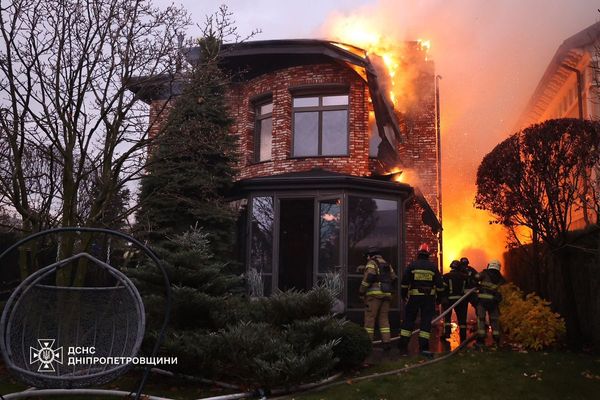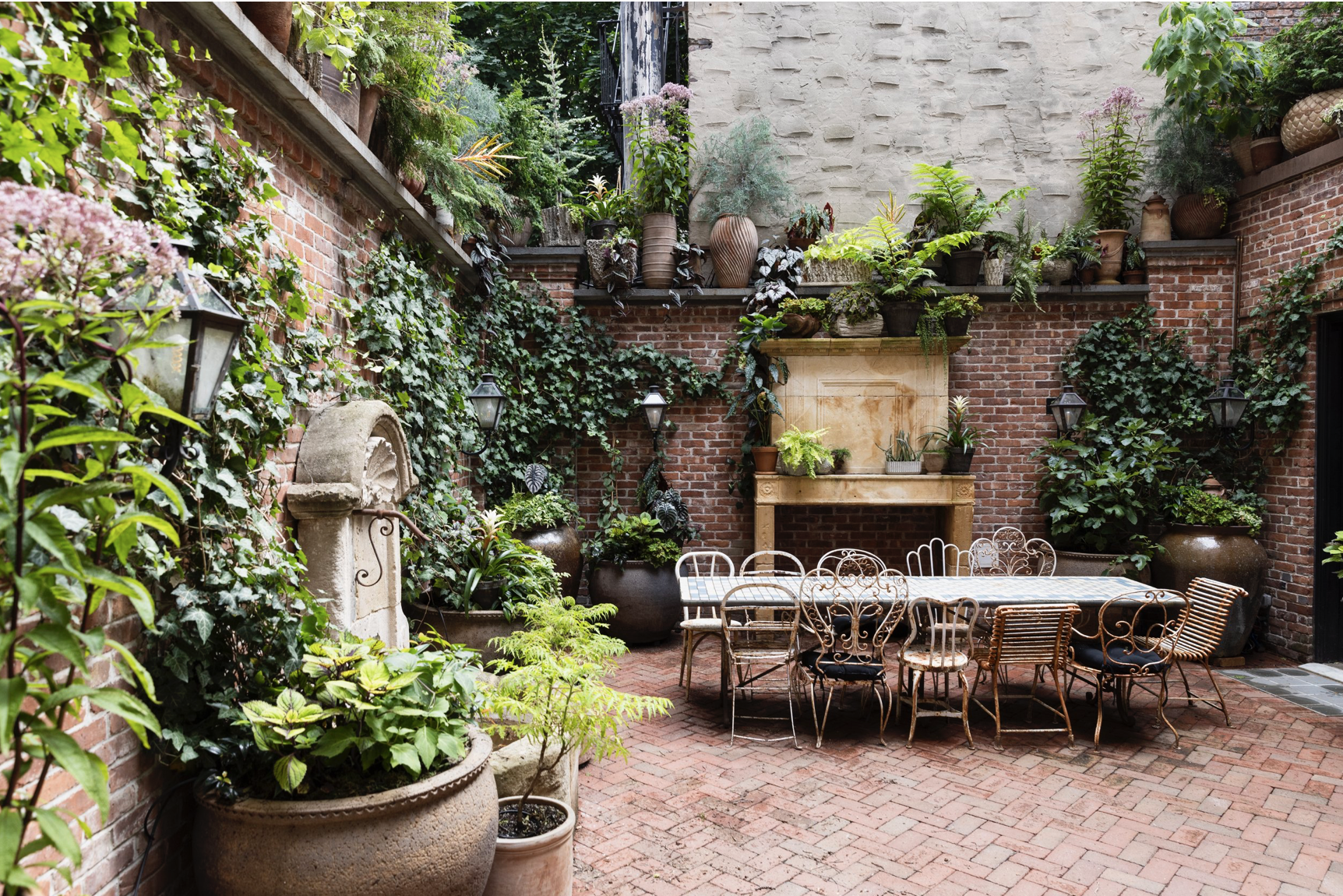
As core parts of your yard start to die back in winter, things can start to look a little bare. However, the right choice of plants - specifically those that bring some structure to your garden during the colder months - can help your outdoor spaces stay looking elevated.
Truth is, there isn't one trick to creating a high-end landscape design — there are hundreds. But according to our award-winning urban garden designer, one of the best ways to keep things looking luxurious is architectural plants.
We’re not talking about plants that complement your building’s existing architecture though; rather plants that are naturally structured and defined in their shape and growth habits. It’s these plants that can transform a garden design into an expensive-looking yard, whether in flower beds, small urban plots or even in winter containers.
Here are some of the best you can choose.
1. Boxwood
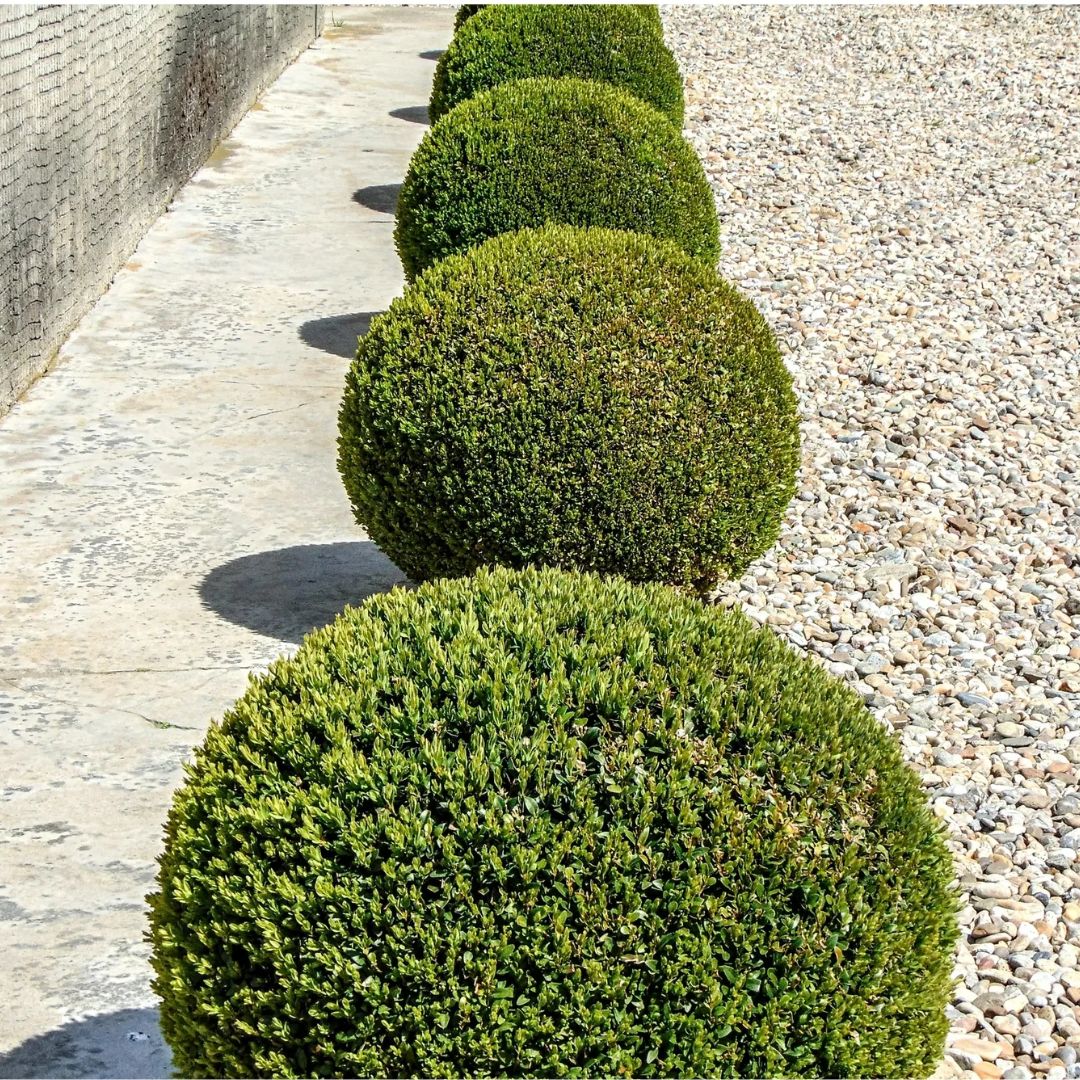
A favorite evergreen shrub known for its compact and neat appearance, you’ll find boxwood in gardens all over the country, including in Thomas Little of Urbangreen Gardens’ designs.
Though it’s commonly used as a privacy hedge in larger yards due to its dense growth patterns, it’s also great at adding evergreen interest and sculptural greenery to yards come winter.
Designer Thomas says "With its small leaves, this evergreen shrub lends itself to sculpting and the presence of sharp shape in the garden, be it spherical or whimsical profiles." Thomas isn’t wrong about the sculptural aspect of these plants, there are all sorts of topiary designs that boxwood can accommodate. Five-foot tall spirals, lollipops, cones, spheres… you name it and it’s probably been attempted!
But urban gardening doesn’t stop there. Knowing what to plant next to your boxwood as a companion plant is almost as important as the boxwood itself. For Thomas, this means contrasting textures.
"Sharply-sheared boxwood shines against the more unpredictable softness of all manner of Miscanthus and all grasses that tassel in fall," says designer Thomas.
To keep this contrast, you’ll have to keep your boxwood in good shape though. Topiary shears, such as these from Amazon, are the best tool for smaller boxwoods, they’ll allow you to create precise cuts with more speed than traditional secateurs.
2. Mahonia
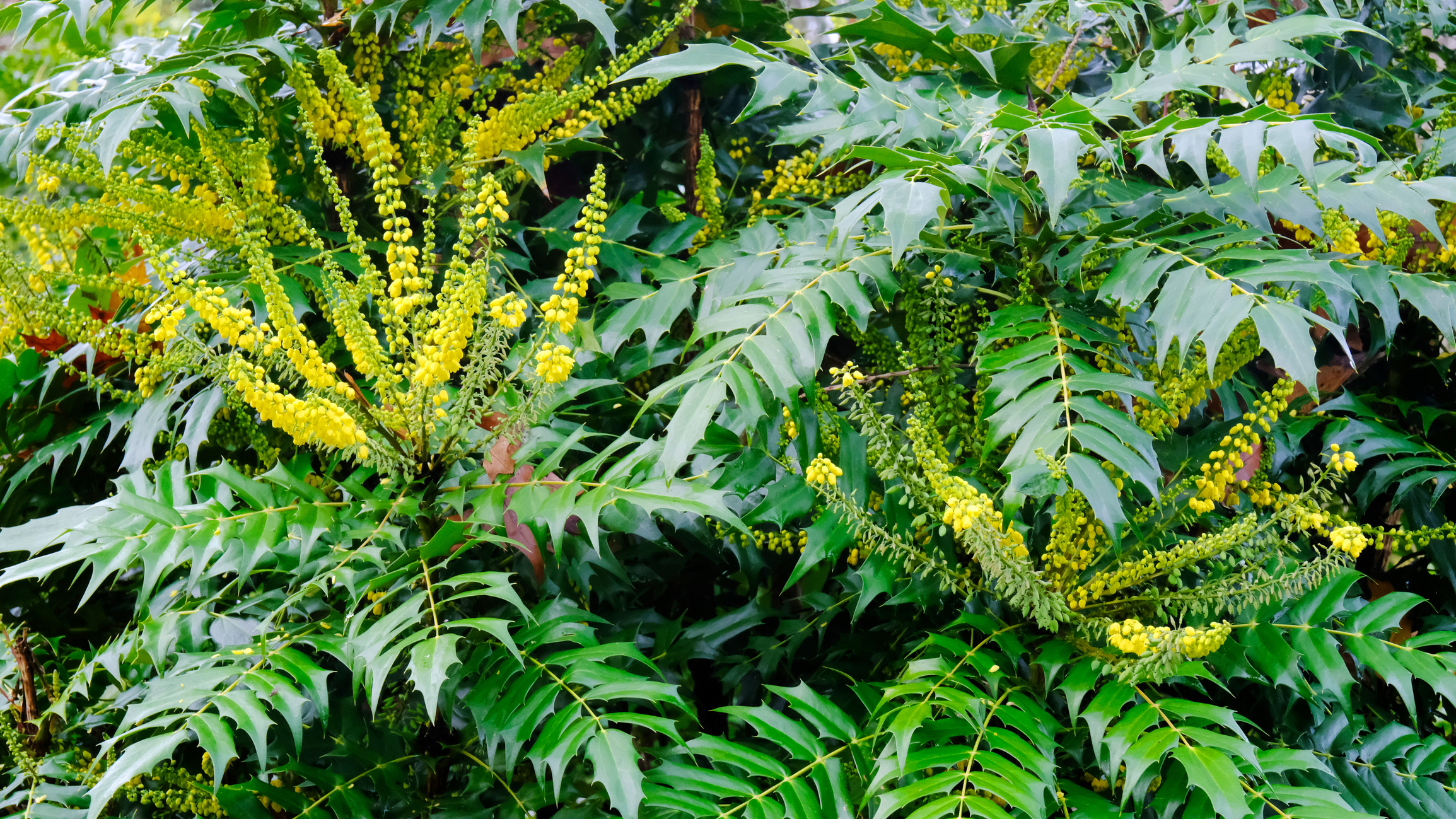
When it comes to structure, you can’t go far wrong with mahonia. Not only does it catch your eye with its holly-shaped leaves, but its late summer and fall flowers provide an explosion of color against the darker green foliage – especially varieties like ‘Volcano’.
Thomas says "With its saw-toothed evergreen leaves and saffron yellow flowers that come through in winter, Mahonia bring a sense of the exotic to a garden design, and it is happy in dappled light, shade or full sun."
It’s great as a low-maintenance garden idea, as well. Once planted and kept watered (but not soaking wet), it’s quite happy being left to its own devices and doesn’t require any intense pruning.
Just be sure to choose a mahonia variety that is suitable for your yard though. Some varieties are compact and great for ground cover or in containers on balconies or patios, but others can grow into large shrubs that would soon take over a small space.
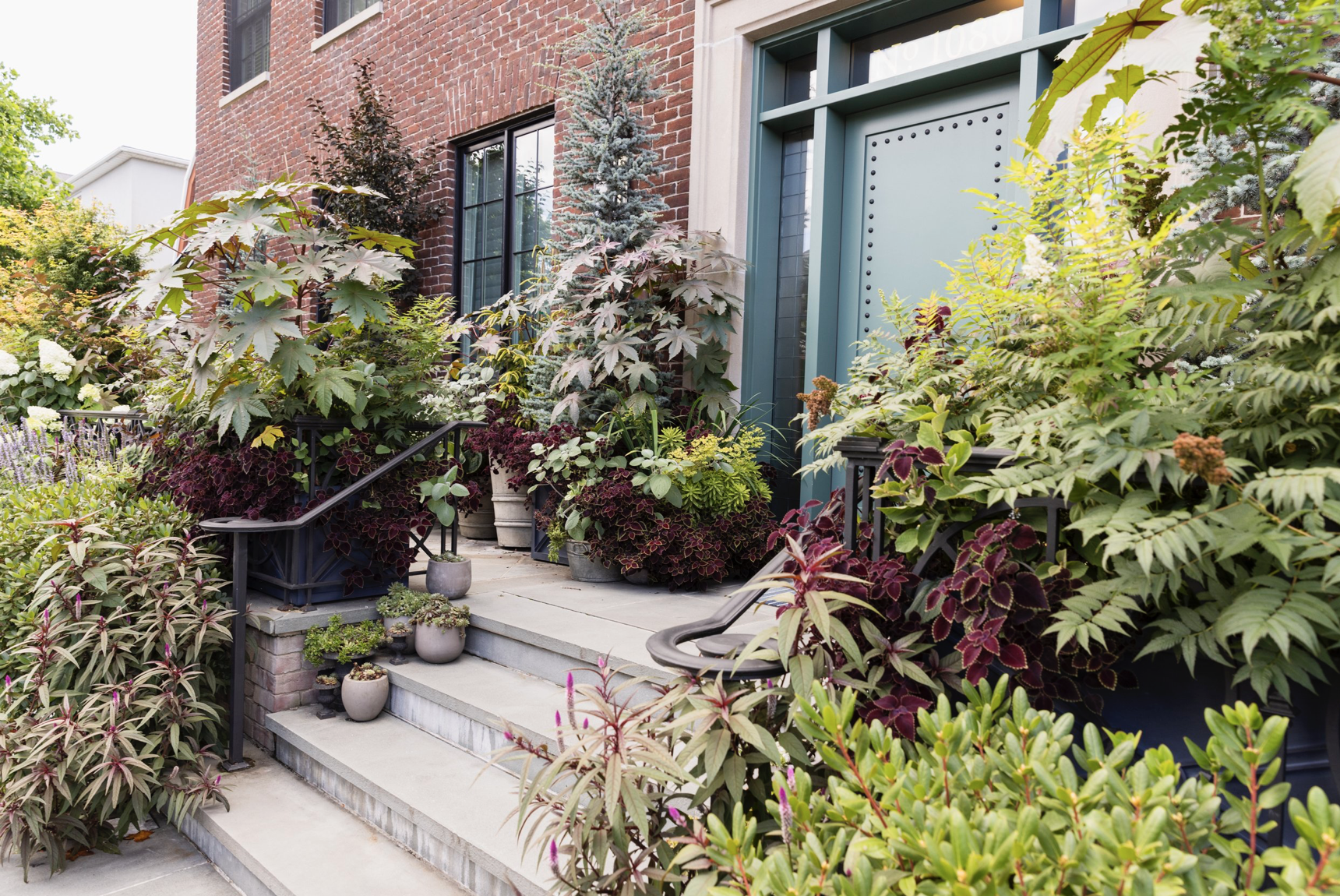
3. Eryngium
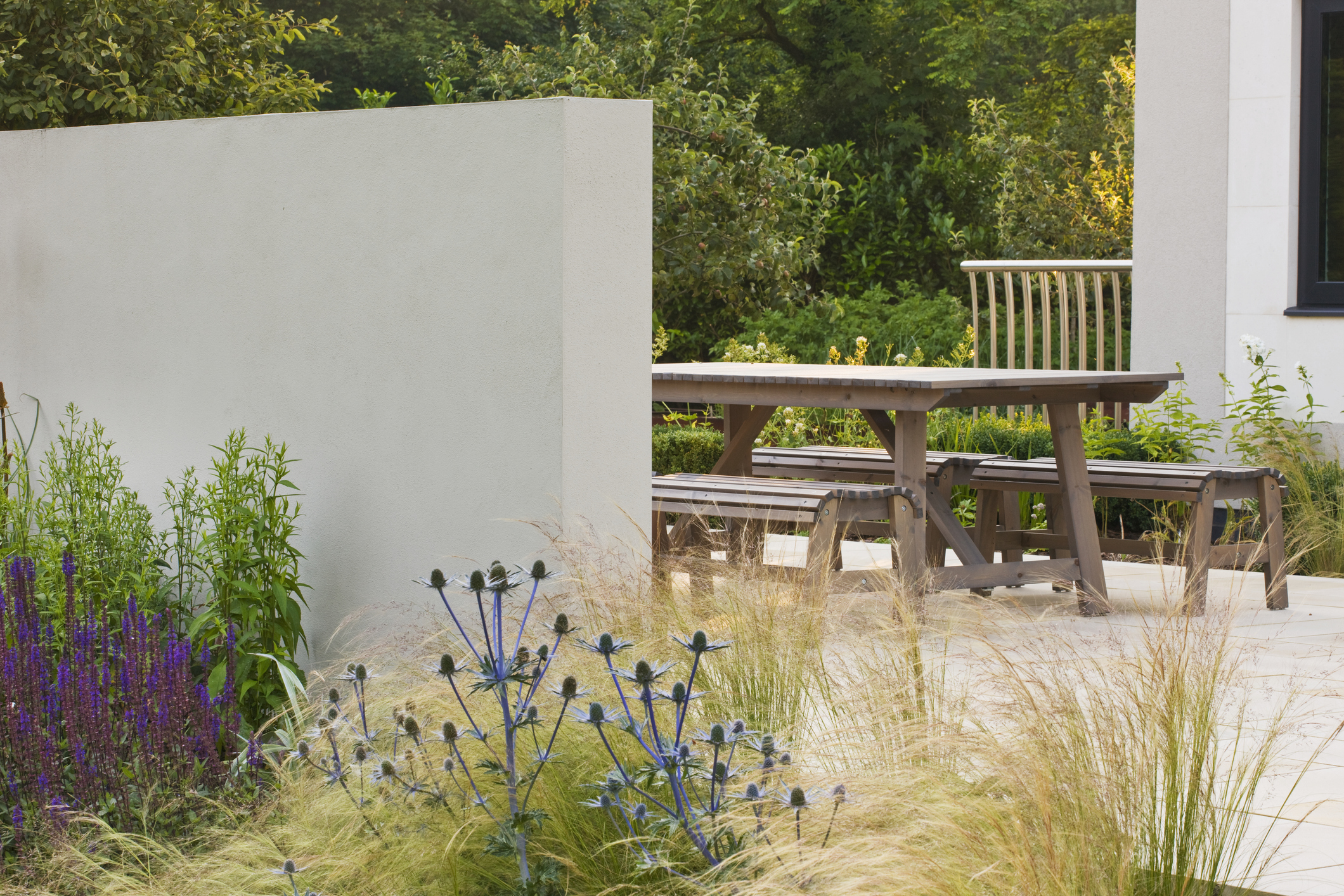
It’s hard to beat eryngium for an architecturally interesting flower. From the flowers, to the foliage and seedheads, it's a plant that keeps on giving right through the seasons.
"Eryngium and thistles add chest-high height, and tough seedheads that stand up to the toughest winds and heaviest snowfall," says Thomas. "Bear in mind, they don’t like 'wet feet', so keep the soil dry and lean (don’t fertilize the soil) and if you have a place by the beach, even better! They love the alkaline sandy soil, and windy, sunny conditions of coastal situated properties."
But where should you place eryngium? According to Thomas, these silver-leaved plants should be front and center of your borders.
"Eryngium, Teasel, Eupatorium and Thistle take center stage among the chaos of the herbaceous border and bring focal points to the softer notes of flowering evergreen shrubs, such as Rhododendron viscosum and Hydrangea paniculata, which holds its parchment paper-colored blooms well into early to mid-winter."
Eryngium make great flowers for cut floral arrangements as well. Simply cut them at the base and use them fresh, or for a long-lasting display you can dry them by hanging them upside down in your potting shed or garage – anywhere dry will work!
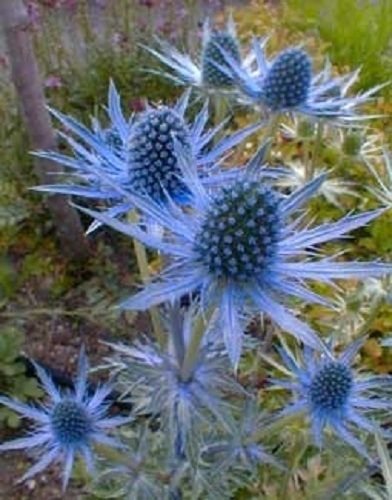
Price: $9.99
Quantity: 25 seeds
4. Teasel
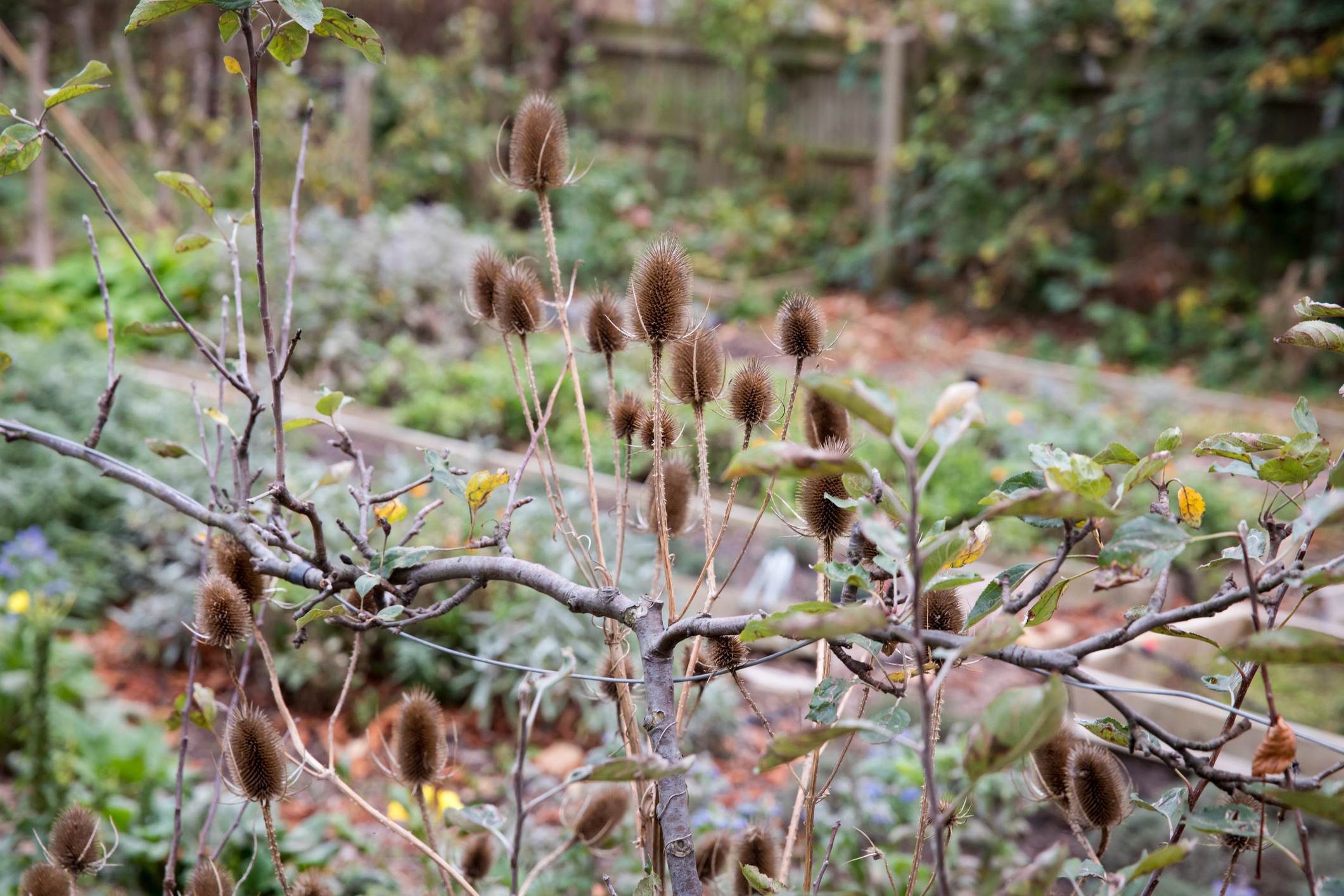
An absolute magnet for pollinators and birds – especially goldfinches who love to feast on the seeds – teasel’s tall statuesque silhouette makes it a favorite for luxury garden designers.
"This striking plant gets its name from its use as a tool in wool carding and the preparation of it for spinning into yarns from America's more agrarian times," says expert Thomas. "A happy and prolific spreader. Teasel thrives in soil that is consistently wet, ideally at the end of a woodland. This striking plant is truly architectural and grows in full sun to 6-7 ft high, depending on the length of your growing season."
Teasel’s simple structure and limited foliage make a great contrast against more robust greenery like hydrangeas. But we also love seeing them as part of a more naturalistic planting design, grouping them with other native wildflowers as part of a larger drift – echinacea and ferns are a great place to start!
Plus, as Thomas reveals, "Anything that produces a finer seed, like Miscanthus 'heavy metal', Eypatorium, Echinacea and Rudbeckia will be a welcome food source to the birds that live in your area. An added bonus to this is the birdsong you’ll hear throughout winter in your garden."
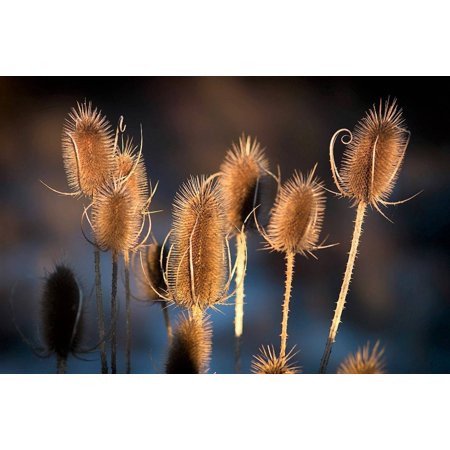
Price: $2.99
Quantity: 75 seeds
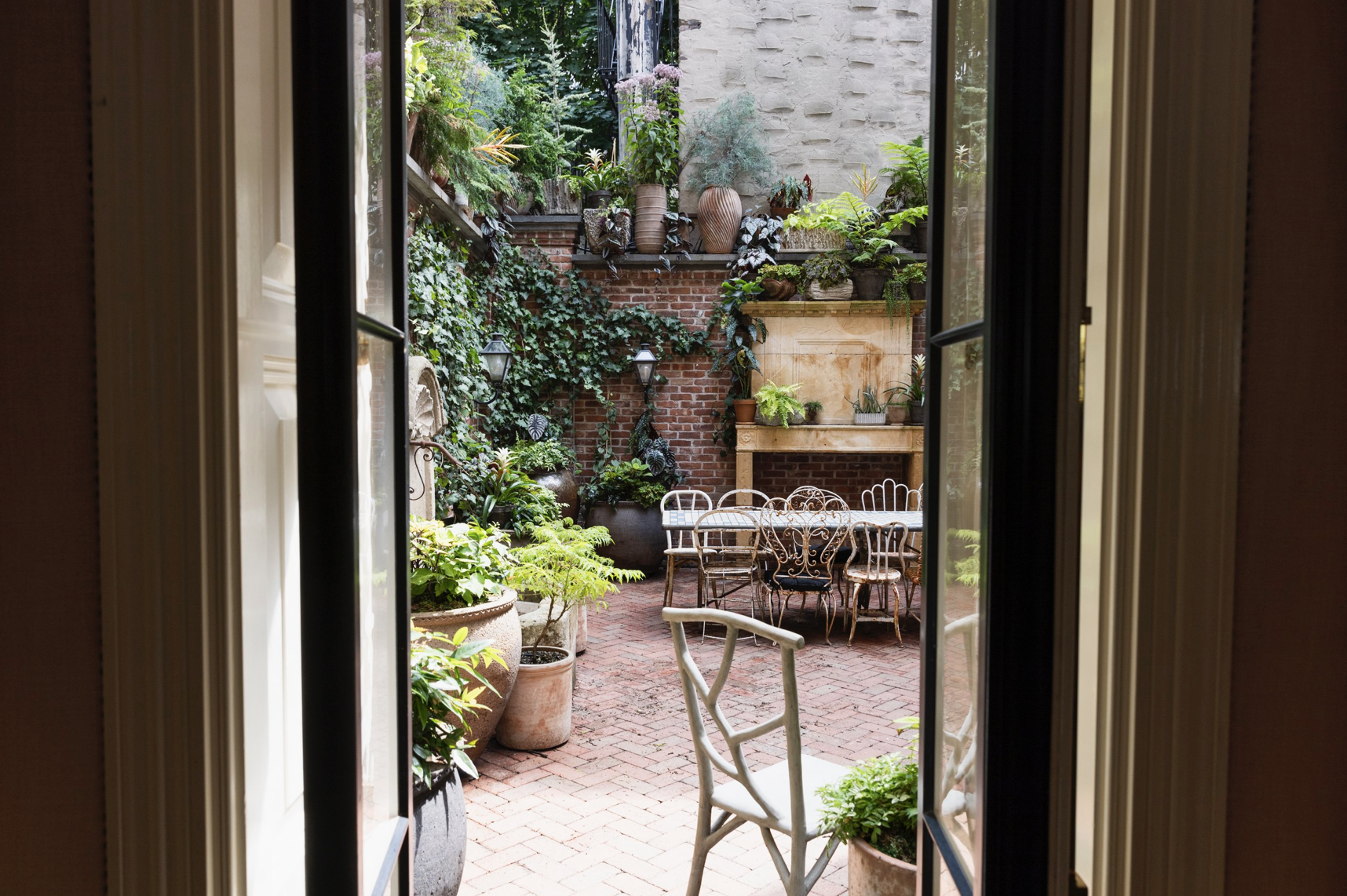
5. Heather
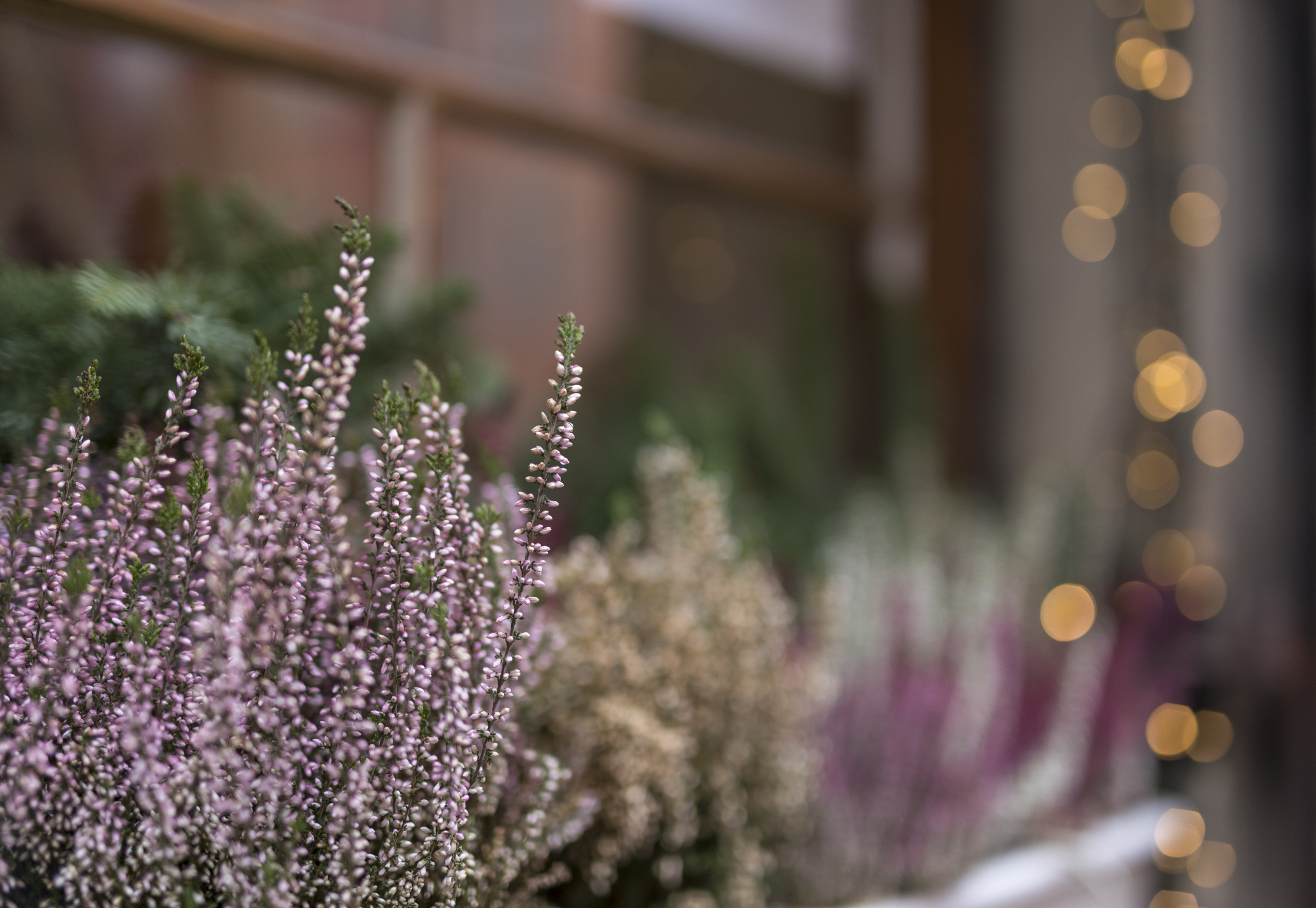
Thomas’s textural focus doesn’t just apply to taller perennials though. Architectural details need to be found all over your yard design throughout the seasons, including at your feet.
This is where alpine plants like heather excel in Thomas’s designs. "Heather, heaths or calluna come from the rocky alpine parts of the world and are tough, resilient, ankle-high beauties that begin flowering in fall and hold their color well into early winter," says expert designer Thomas. "They are evergreen, spiky and striking. Plant these plants in stoney outcrops in your garden or in places that are windswept and similar in condition to the moors of England."
As heathers are quite compact in both their foliage and root space, they make great plants for shallow tabletop containers or as flowers for window boxes. Their spire-like flowers will rarely exceed 11 inches in height, so won’t block your view across the table or out the window! Pair them with these winter container plants for a design that will look good all winter long.
6. Sempervivium
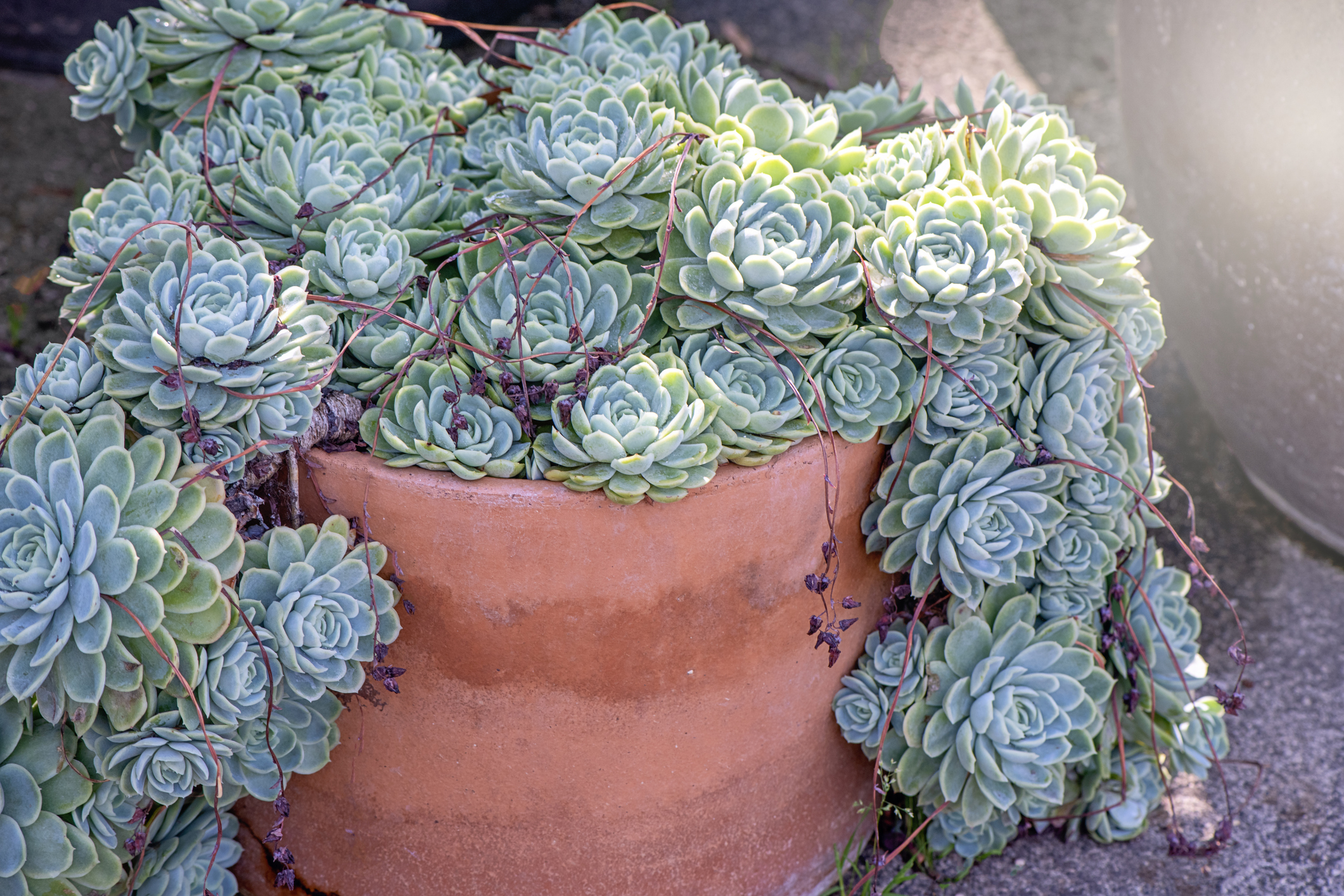
Sempervivium – the horticultural equivalent of ornate Art Deco interior molding. It's detailed planting ideas like sempervivums peeking through paths and hidden in crevices that set Thomas's designs apart. No need for overly manicured yards, these petite succulent garden ideas can create small pockets of considered planting that make a design look lived-in, naturally layered, and interesting.
"Sempervivium and Sedum are increasingly being used as green roofing material for their incredible toughness and resilience in all seasons," says Thomas. "They will keep your paths and the spaces between your cobblestones and slate vivid, alive and interesting in the winter months. Keep their soil dry, give them lots of sun and they will prove their name true ‘sempervivum - live forever’."
Just be careful when planting sempervivum along pathways though. They like well-draining dry soils, and won’t tolerate ground that frequently floods due to rainfall. Nestle them in gritty, gravel paths, or in-between gaps in your brickwork to add highlights to your home’s hardscaping.

7. Ascot Rainbow Euphorbia
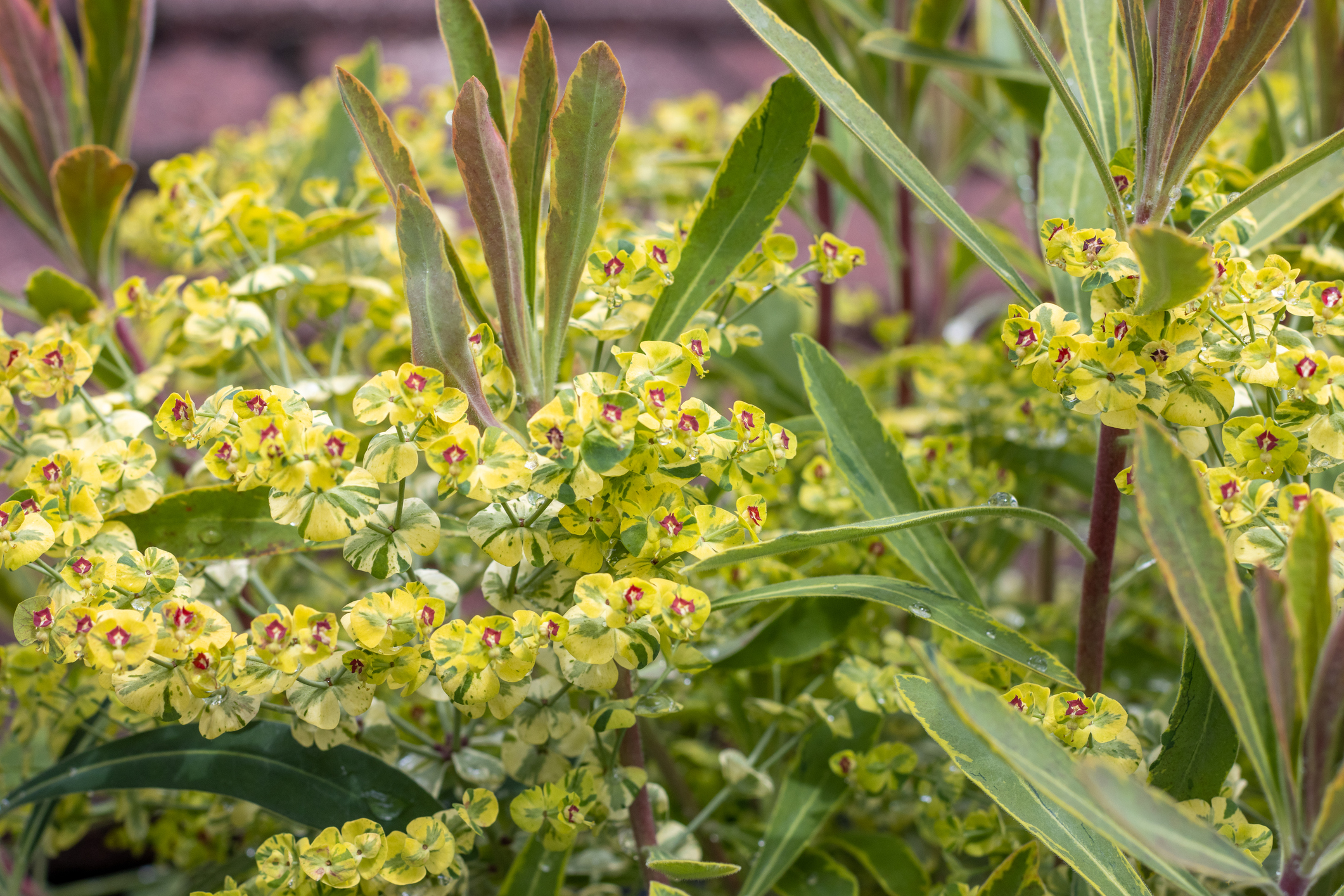
Euphorbia is an evergreen like no other. Its tall stems wrapped in long rounded leaves provide a jungle-like feel to gardens and patios – when it comes to architectural plants, it’s pretty hard to top.
But Thomas’s best pick for euphorbia is a relatively new variety – Ascot Rainbow. "A relative newcomer to the world of plants, Ascot Rainbow euphorbia is a striking hybrid that stands out in the garden through its variegation and ombré pattern," says designer Thomas of this garden trend. "In spring, the gardener is rewarded with chartreuse-colored blooms that double the height of the plants and give the plant a more skeletal transparent profile."
For Thomas, combining and contrasting the weight of euphorbia and other evergreens is an exciting part of his designs. "Companion planting is an advanced skill in gardening as it has to do with an entertaining amount of predicting how things will look when everything grows in together," he says. "always consider the stability and weight of evergreens like euphorbia challenged by the whimsy and wildness of perennials such as Iris Sabirica, Heuchera and the striking and extremely fragrant Perovskia Atripricifolia."



